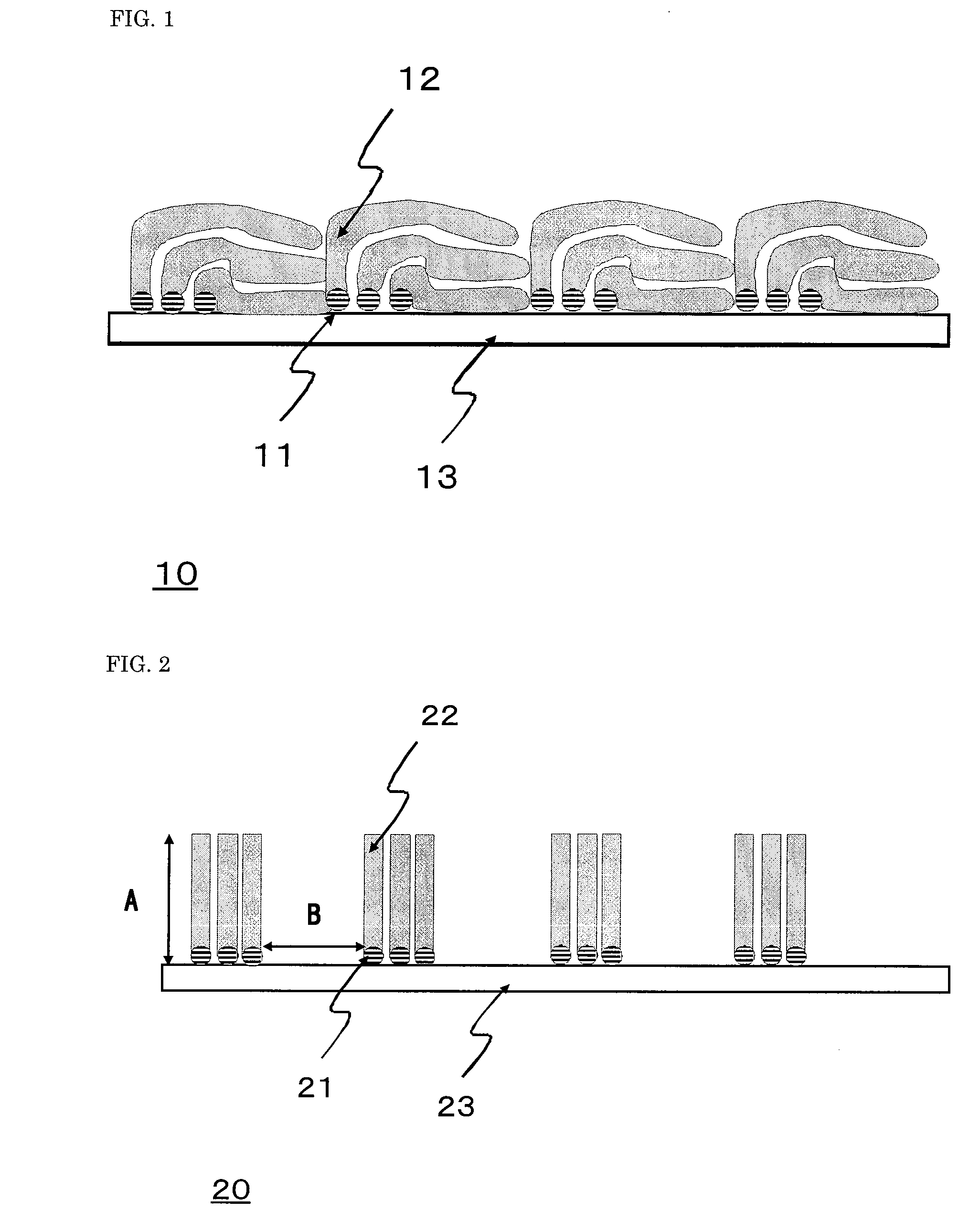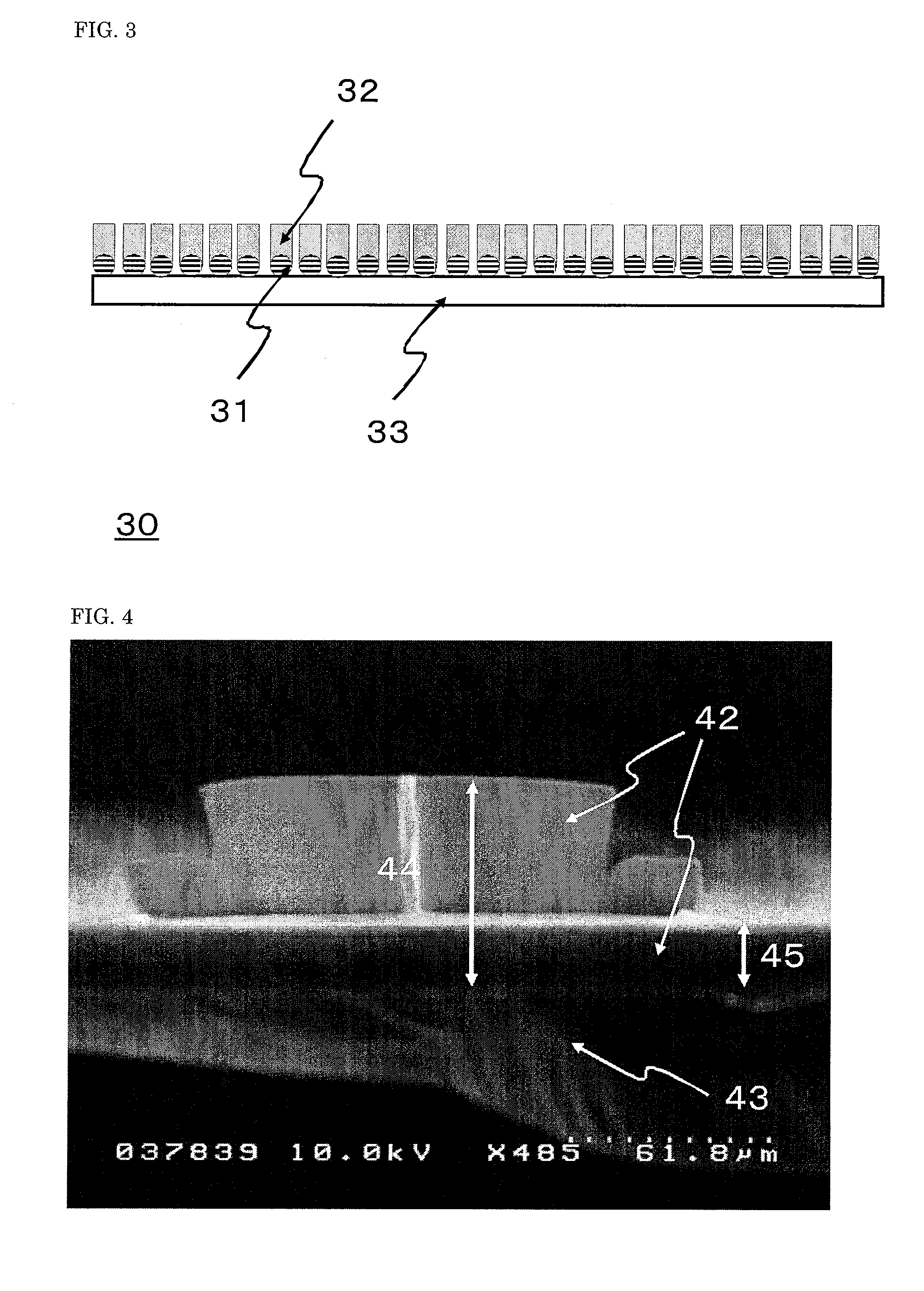Energy storage device, method for manufacturing the same, and apparatus including the same
a technology of energy storage device and energy storage device, which is applied in the direction of cell components, final product manufacturing, sustainable manufacturing/processing, etc., can solve the problems of reducing the reliability of the energy storage device, difficult to apply the carbon nanotube electrode to the energy storage device having the above structure, and low electrical resistance of carbon nanotube electrodes, etc., to achieve the effect of improving long-term reliability, large current and large curren
- Summary
- Abstract
- Description
- Claims
- Application Information
AI Technical Summary
Benefits of technology
Problems solved by technology
Method used
Image
Examples
example 1
[0111]In a state where aluminum foil (15 μm in thickness) that was the electric conductor was covered with a striped patterning mask having a slit width of 400 μm and a slit-to-slit distance of 400 μm, Fe that was the catalyst metal used for the synthesis of the carbon nanotube was electron-beam-evaporated on the aluminum foil so as to have a thickness of 1 nm. Thus, a Fe film was formed on the surface of the electric conductor in a stripe pattern having the width of 400 μm and the distance of 400 μm.
[0112]Plasma CVD was carried out with respect to the aluminum foil at 620° C. using ethylene as a carbon source. Thus, the layer of the carbon nanotubes was formed on the surface of the Fe film so as to have an average thickness of 403 μm. With this, bundles of the carbon nanotubes were vertically formed on the surface of the aluminum foil in a stripe pattern having the width of 400 μm and the distance of 400 μm. To be specific, one end of the bundle was connected to the aluminum foil.
[...
example 2
[0116]The rolled-structure energy storage device was manufactured in the same manner as in Example 1 except that the average thickness of the layer of the carbon nanotubes was changed to 522 μm. The reaction current was 11 μA when the applied voltage was +1.0V.
example 3
[0117]In a state where the aluminum foil (15 μm in thickness) that was the electric conductor was covered with a vertical-horizontal lattice patterning mask having 400-μm convex squares and a square-to-square distance of 400 μm, the water-repellent film was formed on the aluminum foil and dried. The water-repellent film was formed such that an operation of applying toluene diluted modified polypropylene (UNISTOLE R-200 produced by Mitsui Chemicals, Inc.) to the aluminum foil and carrying out heating for five minutes at 170° C. in an electric furnace was carried out twice.
[0118]Next, to form the film of Fe that was the catalyst metal used for the synthesis of the carbon nanotube by the dip coating, the aluminum foil was immersed in an iron acetate ethanol solution, pulled out from the solution at a rate of 4 cm / min, and dried at 400° C. for 30 minutes. Thus, the Fe film was formed on the surface of the electric conductor such that 400-μm squares were arranged at intervals of 400 μm.
[...
PUM
| Property | Measurement | Unit |
|---|---|---|
| volume density | aaaaa | aaaaa |
| length | aaaaa | aaaaa |
| diameter | aaaaa | aaaaa |
Abstract
Description
Claims
Application Information
 Login to View More
Login to View More - R&D
- Intellectual Property
- Life Sciences
- Materials
- Tech Scout
- Unparalleled Data Quality
- Higher Quality Content
- 60% Fewer Hallucinations
Browse by: Latest US Patents, China's latest patents, Technical Efficacy Thesaurus, Application Domain, Technology Topic, Popular Technical Reports.
© 2025 PatSnap. All rights reserved.Legal|Privacy policy|Modern Slavery Act Transparency Statement|Sitemap|About US| Contact US: help@patsnap.com



